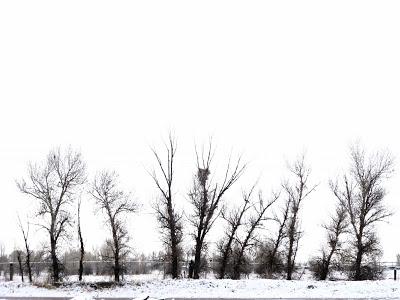
Cottonwoods in spring; Laramie, Wyoming. The middle tree has a magpie nest.
I’m a tree-following slacker, with no monthly report. It’s still snowing—good for plants but not for unpaved roads and trails, and being human, I’m busy with other things that supposedly have to be done. My serviceberry/juneberry (Amelanchier) may well be blooming, and I may well miss it.However, I do have tree photography news to report. First, Anne McKinnell recently posted How to Photograph Trees—interesting and helpful as usual. I recommend her eBooks, with clear instructions and assignments (challenging but always fun). Second, a photographer/tree-lover friend now has an Instagram site and is happy to share.Anne points out that trees often are difficult subjects, mainly because they’re so big. They feel majestic—but how can we capture that feeling in a photo? Sometimes it’s effective to shoot from our limited perspective as mere humans, anchored to the ground.
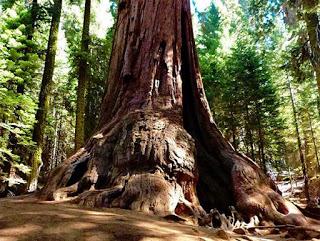
Giant sequoia; Sierra Nevada, California. (RC Koeppel). We see only the trunk, but the striking contrast with other trees makes its majesty obvious.
“… you can also lay flat on the ground and shoot straight upwards … use your exposure compensation to adjust the brightness of the image to make sure there is detail in both the highlight and shadow areas.”
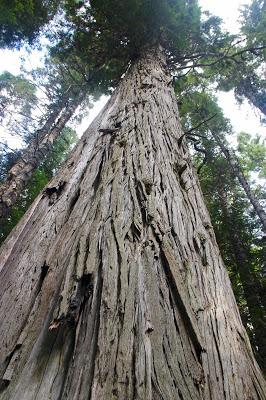
Red cedar; Ross Creek Giant Cedar Grove, Montana.
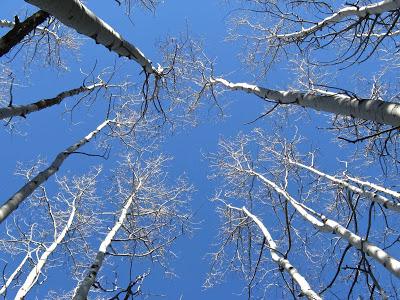
Quaking aspen; Laramie Mountains, Wyoming.
But what if we come across a tree that can’t be captured in its entirety. Maybe we should choose a photogenic part of it instead. Bark is often an obvious choice—because of texture and pattern. I like bark photos because they can be abstract—they draw me into a world different from that of the whole tree.
Giant sequoia, “singed a bit but still alive;” Sierra Nevada, California (RC Koeppel).
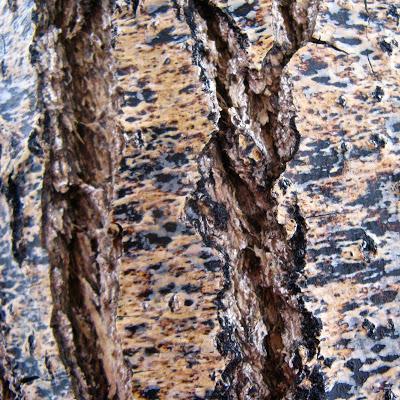
Wet cottonwood; Laramie, Wyoming.
Photos of lone trees often feel clichéd, unimaginative—but not if done in an imaginative way, so be creative! Anne offers specific tricks, for example:“emphasize its solitude while still allowing it to make up a large portion of the frame, use a long lens (50mm or more) from further away to visually compress the image.”
“Use the trees in creative ways to play with new styles of composition. For instance, you can try peering through the branches of one tree while photographing another, using the leaves in the foreground to frame your shot and direct focus inwards.”
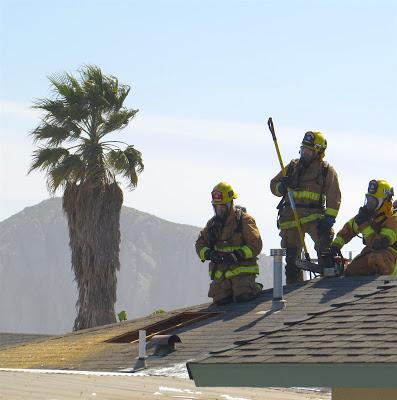
Palm tree; Morro Bay, California (RC Koeppel).
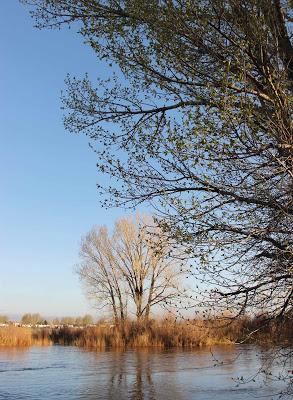
The cottonwood I followed in 2014; Laramie River, Wyoming.
Is it possible to make a photo of a forest interesting? They can be pretty repetitive. But repetition is an effective compositional tool.“A lot of trees look a lot alike, especially when you’re dealing with a forest full of trees of the same species. … If done properly, though, this can be an effective use of repetition.”
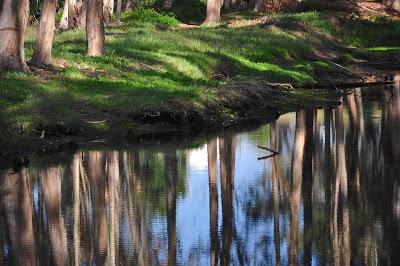
Eucalyptus trees; Los Osos, California (RC Koeppel).
The tip I found most helpful was “strong graphic design”—mentioned multiple times. Anne didn't define it explicitly, but somehow I knew what it meant. Basically you don’t want a chaotic collection of branches or leaves or whatever. There needs to be a clear subject.
“it is very easy to end up with a jumble of branches that go every which way and look like a clump of bramble bush. Try to find subjects with a clean graphic design to them.”
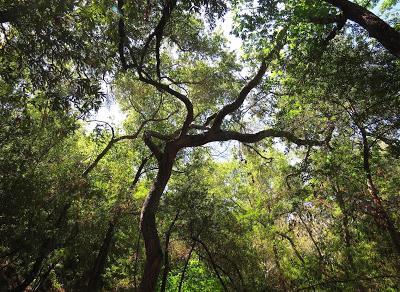
High forest oak; Central California Coast (RC Koeppel).
“Dead trees rarely make good subjects. The exception to this is when they make a very strong graphic design and have a clean background …”
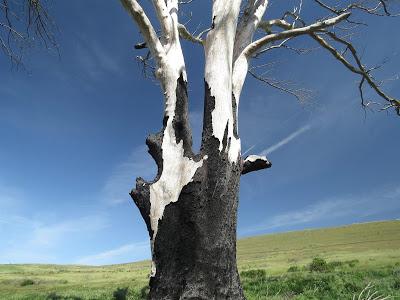
Dead and burned (eucalyptus); Central California Coast (RC Koeppel).
Finally, photograph trees for the season!

Quaking aspen; Fish Lake, Utah.
Autumn means color, right? Not necessarily. Anne emphasizes early on that one of the first steps in composition is to consider “how do you want the photo to look – bright and cheerful? Gloomy and mysterious? …” For me, fall feels like death, the end (fortunately only until spring).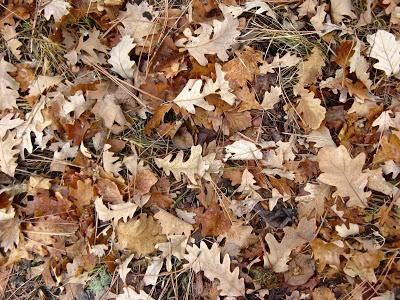
Bur oak; Dugout Gulch, Wyoming.
Winter trees often present the same challenges as dead trees. So think repetition and strong graphic design. Try black-and-white photography—to emphasize form, shape, and pattern.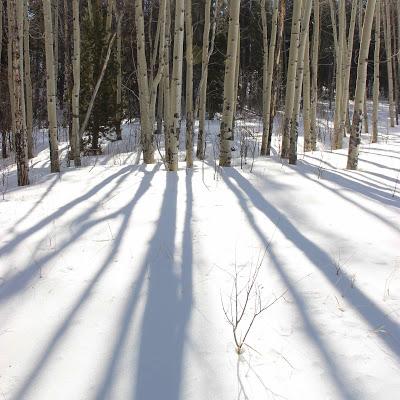
Quaking aspen and their shadows; Enchanted Forest, Laramie Mountains, Wyoming.
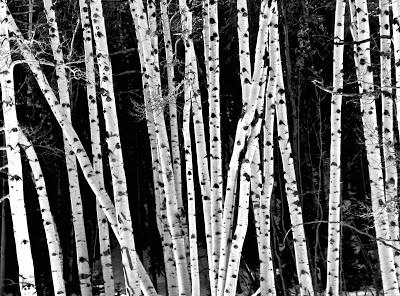
More aspen from the Enchanted Forest.
Spring is all about renewal—buds, fresh leaves, flowers. Anne recommends close-ups, maybe with a macro lens, to capture the details of young growth. But not if you live in Laramie. Here spring means wind, the nemesis of plant photographers.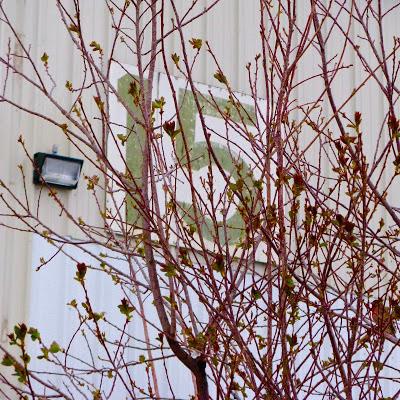
Fresh spring leaves in wind; Laramie, Wyoming. Note spring fauna lower right (American robin).
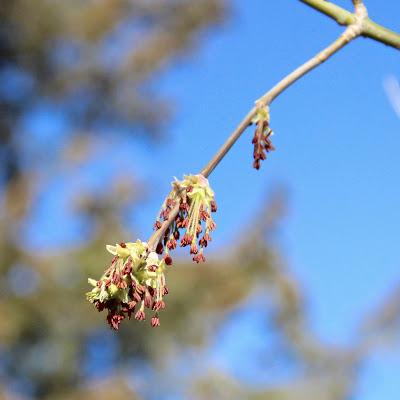
Male boxelder in bloom, near the highest waterfall in Nebraska. It was windy here too! But I tried a fast shutter speed, shot lots of photos, and some turned out to be in focus, amazing.
Summer is surprisingly tough for tree photography, unless you live someplace arid. See Anne’s post for ways to deal with endless cover of lush green leaves hiding much of interest. Challenging, yes—but for some reason, I look forward to it!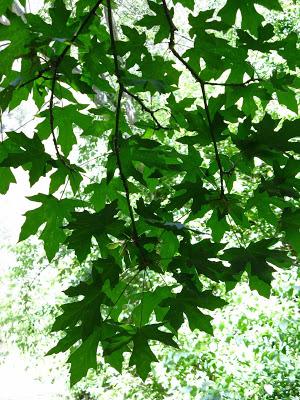
Bigtooth maple; Lopez Canyon, California.
Other tree-followers have shared their news at the virtual gathering hosted by The Squirrelbasket. Check it out!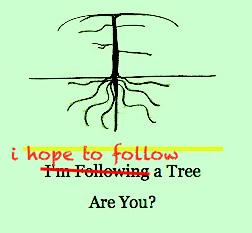
Maybe next month.
